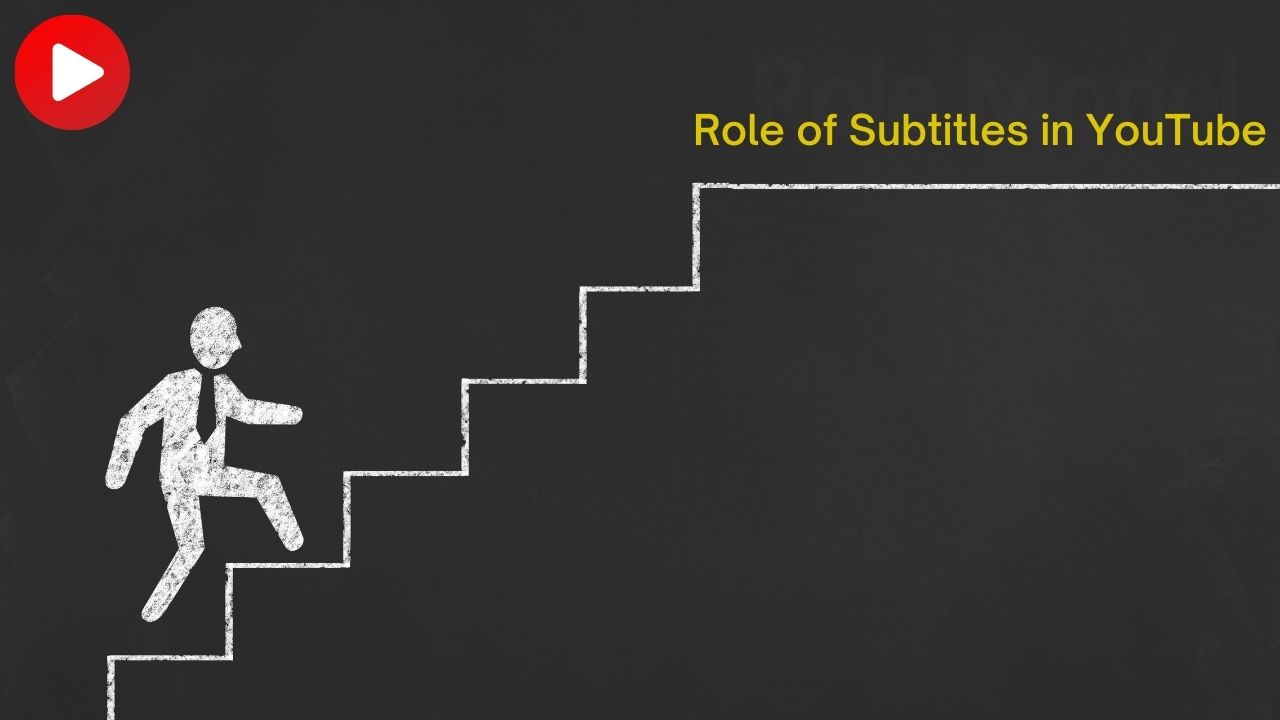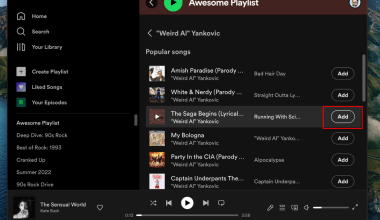In today’s digital age, subtitles in YouTube video have become an essential feature, not just a nice-to-have addition. They serve various purposes, from enhancing accessibility for the hearing impaired to boosting viewer engagement and improving search engine optimization (SEO). This blog will explore the critical role of subtitles in YouTube videos, their benefits, and how to implement them effectively to maximize your video’s reach and impact.
What Are Subtitles and Closed Captions?
Subtitles and closed captions are text versions of the spoken part of a video. While both serve to make content more accessible, there are slight differences. Subtitles in YouTube video typically refer to the text that translates or transcribes the dialogue, primarily for viewers who can hear but may not understand the language spoken. Closed captions include additional information like speaker identification, sound effects, and music descriptions, catering to viewers who are deaf or hard of hearing.
Why Are Subtitles in YouTube Videos Important?
1. Accessibility
One of the primary reasons to include subtitles in YouTube video is to make content accessible to a broader audience. Approximately 5% of the world’s population (430 million people) has disabling hearing loss. By providing subtitles, you ensure that these viewers can enjoy your content, thereby expanding your reach and inclusivity.
2. Improved Comprehension
Subtitles help viewers who are not native speakers of the video’s language to understand the content better. This is particularly useful for educational videos, tutorials, and content targeting an international audience. Subtitles in YouTube video allow viewers to follow along more easily, enhancing their comprehension and retention of the information presented.
3. Enhanced Viewer Engagement
Videos with subtitles in YouTube video tend to keep viewers engaged longer. According to studies, videos with subtitles see an increase in view duration. When viewers can read along, they are less likely to miss critical information and more likely to stay until the end.
4. Accessibility for Different Learning Styles
Not everyone learns the same way. Some people are visual learners, while others might be more auditory. Subtitles in YouTube video cater to these different learning styles, ensuring that more people can engage with and benefit from the content. For instance, someone who struggles with auditory processing might find it easier to read along with the subtitles.
5. Facilitating Content in Noisy Environments
Often, viewers are in environments where they can’t play videos out loud. Whether on public transport, at work, or in a busy cafe, subtitles in YouTube video allow people to consume content without needing to hear the audio. This flexibility increases the likelihood that viewers will watch and engage with the entire video, no matter where they are.
The SEO Benefits of Subtitles in YouTube Videos
1. Better Indexing by Search Engines
YouTube and other search engines cannot watch videos, but they can read text. By including subtitles in YouTube video, you provide search engines with more information about your content. This helps improve your video’s ranking in search results, making it easier for potential viewers to find your video.
2. Increased Keyword Density
Adding subtitles in YouTube video increases the keyword density of your video content. When your target keywords appear in the subtitles, it reinforces the relevance of your video for those search terms, boosting its SEO performance.
3. Higher Viewer Retention
Search engines favor videos that keep viewers engaged. As mentioned earlier, videos with subtitles in YouTube video tend to have higher viewer retention rates. This signals to search engines that your content is valuable, further improving your ranking.
4. Enhanced Discoverability
Videos with subtitles in YouTube video are more likely to appear in the “Recommended” section of YouTube. The platform’s algorithm favors content that retains viewers, and subtitles can significantly contribute to longer watch times. This enhanced discoverability can lead to a snowball effect, where increased views lead to more recommendations and even more views.
5. Support for Multilingual Audiences
Subtitles can be translated into multiple languages, making your content accessible to a global audience. This is especially important for educational and informational videos, where viewers from different parts of the world can benefit from the content. By offering subtitles in YouTube video in various languages, you can attract and retain a more diverse audience, boosting your video’s overall reach.
How to Add Subtitles to Your YouTube Videos
1. Automatic Subtitles
YouTube offers an automatic subtitle feature that generates captions using speech recognition technology. While this can be a quick way to add subtitles, it is not always accurate, and manual corrections are often necessary to ensure quality.
2. Manual Subtitles
Creating and uploading your own subtitles in YouTube video ensures accuracy. You can write your subtitles using a simple text editor or subtitle software and upload them to YouTube. This method allows for precise timing and correct translations, providing a better viewing experience.
3. Using Subtitle Services
Several professional services offer subtitle creation, ensuring high-quality and accurate subtitles in YouTube video. These services can be beneficial for channels with extensive content or those targeting multiple languages.
Best Practices for Creating Subtitles in YouTube Videos
1. Keep It Simple
Use clear and concise language in your subtitles in YouTube video. Avoid using slang or jargon that might confuse viewers. The goal is to make the content as understandable as possible for everyone.
2. Synchronization
Ensure that your subtitles in YouTube video are perfectly synchronized with the audio. Delays or mismatches can frustrate viewers and disrupt their experience. Use subtitle editing tools to fine-tune the timing.
3. Accuracy
Double-check your subtitles in YouTube video for spelling and grammatical errors. Accuracy is crucial not only for comprehension but also for maintaining a professional image.
4. Formatting
Use proper formatting to indicate different speakers or emphasize certain words. For example, use italics for off-screen dialogue or sound effects. This helps viewers understand the context better.
5. Consistency
Consistency in style and formatting across all your videos helps create a professional look. This includes font size, color, and positioning of the subtitles in YouTube video. A consistent approach makes your content more enjoyable and easier to follow.
Tools for Creating Subtitles in YouTube Videos
1. YouTube Studio
YouTube Studio offers built-in tools for creating and editing subtitles in YouTube video. You can use these tools to generate automatic captions and then edit them for accuracy.
2. Subtitle Software
There are many software options available for creating subtitles in YouTube video, such as Aegisub, Subtitle Workshop, and Amara. These tools offer more advanced features for precise subtitle creation and synchronization.
3. Online Subtitle Services
Several online services provide professional subtitle creation, such as Rev, 3Play Media, and GoTranscript. These services can handle large volumes of content and multiple languages, ensuring high-quality and accurate subtitles in YouTube video.
The Future of Subtitles in YouTube Videos
As technology advances, the use of subtitles in YouTube video is expected to become even more sophisticated. Artificial intelligence (AI) and machine learning are improving automatic subtitle generation, making it more accurate and accessible. Additionally, interactive subtitles that allow viewers to click on words for definitions or translations are on the horizon, further enhancing the viewer experience.
FAQs
Q1: How do subtitles in YouTube videos help with SEO?
A1: Subtitles in YouTube video help search engines understand the content of your video, improving its ranking in search results and increasing its visibility.
Q2: Can I use YouTube’s automatic subtitles feature?
A2: Yes, YouTube offers automatic subtitles, but manual corrections are often needed to ensure accuracy.
Q3: Are subtitles necessary for all YouTube videos?
A3: While not mandatory, adding subtitles in YouTube video enhances accessibility, engagement, and SEO, making it beneficial for most content types.
Q4: How can I create subtitles for my YouTube videos?
A4: You can create subtitles manually, use YouTube’s automatic feature, or hire professional services for high-quality subtitles.
Q5: What are the best practices for formatting subtitles?
A5: Keep subtitles simple, synchronized, accurate, and consistent in formatting to ensure a professional and enjoyable viewing experience.
Q6: How can subtitles increase my video’s engagement?
A6: Subtitle in YouTube video help retain viewer attention, making it easier for them to follow along and stay engaged throughout the video. This leads to higher retention rates and more interactions such as likes, comments, and shares.
Q7: What tools can I use to create subtitles?
A7: Tools like YouTube Studio, Aegisub, Subtitle Workshop, Amara, and professional services like Rev, 3Play Media, and GoTranscript are excellent for creating accurate and synchronized subtitles.
Q8: Can subtitles be translated into other languages?
A8: Yes, subtitles can be translated into multiple languages, expanding your video’s reach to a global audience. This is particularly useful for educational and informational content.
Conclusion
Incorporating subtitles in YouTube video is not just a matter of accessibility; it’s a strategic move to enhance viewer engagement, comprehension, and SEO. By following best practices and leveraging the right tools, you can ensure your content reaches a wider audience and stands out in the competitive world of online video.
For further reading, explore these related articles:
- What is YouTube Content ID?
- How to Claim a YouTube Artist Channel?
- YouTube Official Artist Channel: What it is & Why I have its Need?
For additional resources on music marketing and distribution, visit Deliver My Tune.






